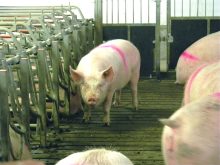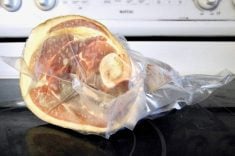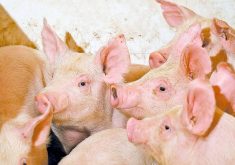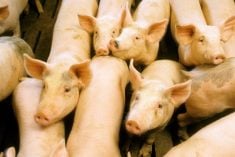A tweet from the first Canadian pork producer to have pigs born using Danish genetics led to the collaboration now known as DanBred Canada.
At DanBred Canada’s official launch Dec. 21 in Stratford, Gilt-Edged barn manager Charlie Illick said in 2017, the Orangeville-area farm was planning a new sow building and took a trip to Denmark to explore sow housing and feeding options.
There, he learned about successes achieved by producers using DanBred genetics. A team from the farm made a second trip in 2018 to see a DanBred multiplier barn.
Read Also
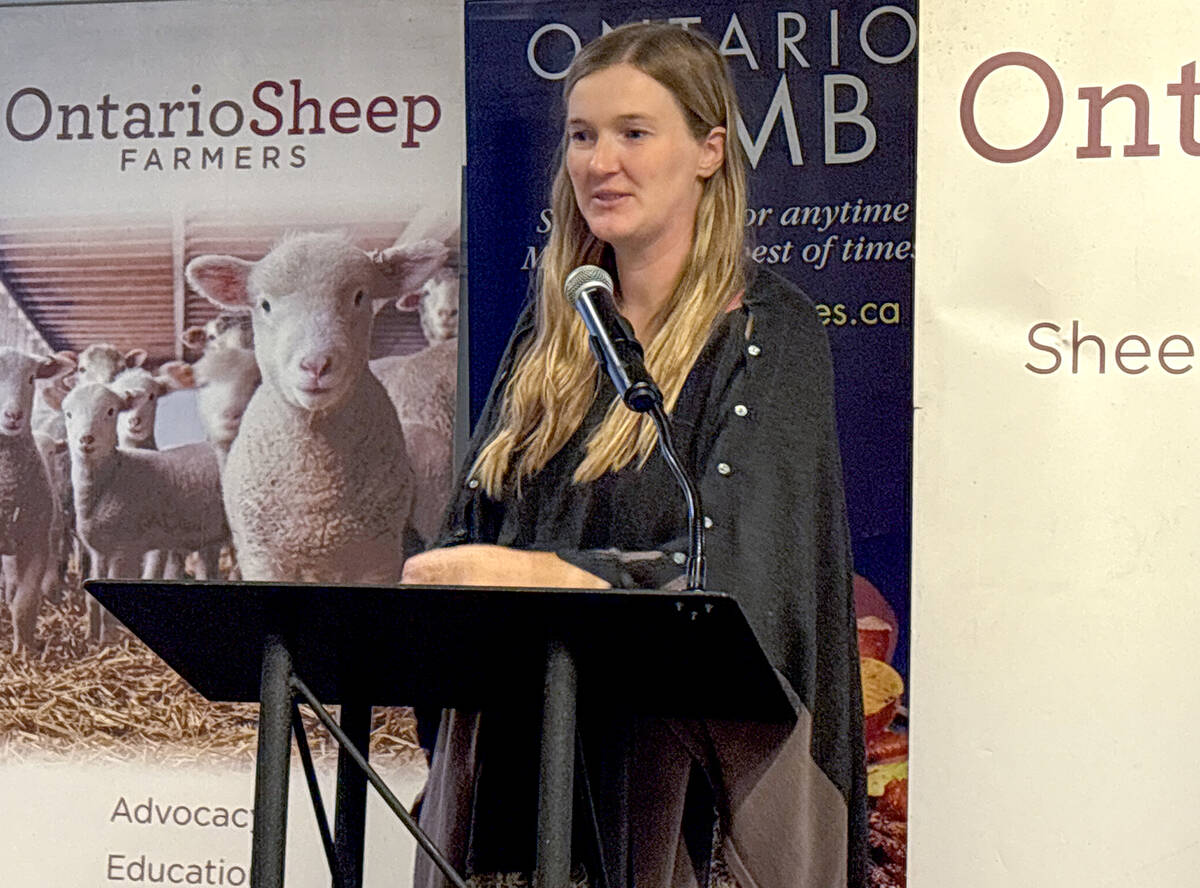
Footflats Farm recognized with Ontario Sheep Farmers’ DLF Pasture Award
Gayla Bonham-Carter and Scott Bade, of Footflats Farm, win the Ontario Sheep Farmers’ 2025 DLF Ontario Pasture Award for their pasture management and strategies to maximize production per acre.
Why it matters: Over its nearly 20-year history, Alliance Genetics Canada built a reputation for quality genetics and Canadian hog producers may continue doing business with the new company.
Illick’s Twitter post about the piglets with Danish genetics caught the attention of Alliance Genetics Canada (AGC) CEO Dave Vandenbroek. He took a further look into DanBred, which eventually led to the takeover of AGC by the Danish company, first announced in July 2022.
“One of the things that blew me away was the amount of detail that was going into these breeding programs,” Illick reported from the two Gilt-Edged Farms visits. He was also impressed by the degree to which other stakeholders are able to share feedback on the DanBred breeding program.
[RELATED] Manitoba Co-operator: Public increasingly positive on hog sector
The Danish company tested and then stepped back from the North American swine genetics market under the DanAvl name about 10 years ago. It underwent a lengthy transformation that saw various elements of the pork value chain in Denmark and other parts of Europe combined under common ownership.
DanBred is now 49 per cent owned by two farmer-owned Danish co-ops and 51 per cent by another member-based Danish organization that serves primary producers and agribusiness. Its vertical integration features genetics and trucking, research and development, and artificial insemination.
Illick says his 2,200-sow farrow-to-finish operation, which includes contract finishing barns, started breeding with DanBred semen in mid-2021 and has seen improvements in average daily gain and feed efficiency.
This shouldn’t come as a surprise, according to DanBred’s sales director Thomas Hansen.
Speaking at the Dec. 21 launch, Hansen chronicled the recent evolution of the company’s R&D efforts, adding that it’s important for DanBred’s leadership to be known as a sow provider “but also to be a genetics solutions partner. … Our aim is to get more knowledge in DanBred and get that knowledge out to producers around the world.”
The operator of the Danish Pig Research Centre, DanBred invests more than $32 million in R&D annually, he said.
“This is what it takes to be here in the future.”
In Denmark, it has 2,500 sows in nucleus barns for each of its white (Landrace and Yorkshire) breeding lines, and 1,800 sows in Duroc nucleus barns. There’s also a DanBred Hybrid line crossing Landrace and Yorkshire.
Its Yorkshires are known for good mothering and large litters, while Landrace have a reputation for good mothering and sturdy, hardy offspring. This reflects the fact that beginning about 15 years ago, the breeding program had a major focus on maternal traits.
Hansen showed a graph comparing DanBred’s “Top 5” at 41.2 pigs weaned per sow per year versus 34 per year for the Danish average. Even though litter size is no longer a major focus, “a lot of producers are still managing to have very high pigs weaned per sow numbers.”
Beginning in 2018, the company’s genetics program moved to 10 per cent emphasis on maternal traits, 70 per cent on finisher efficiency, 17 per cent on meat quality and three per cent on robustness.
In the Duroc line, the focus on finisher efficiency is even higher, at 76 per cent. Influencing feed conversion is the main goal.
“We need to be supplying an animal that is good at turning that feed into meat,” Hansen said.
A graph comparing “days after weaning to 110 kg” indicated 118 days for offspring of Danbred’s Top 5 versus 125 days for the Danish average.
Vandenbroek, who now takes the title of DanBred Canada CEO, told the Dec. 21 launch audience that this type of detail wouldn’t have been possible for AGC.
“What these people provide, it’s more than what we could do (at AGC). It’s great to have this resource.”
Responding to questions, Vandenbroek noted an awareness that what works in Denmark isn’t necessarily going to work in Canada.
Denmark has more liquid feeding than Ontario, he noted, and this is typically lower in nutritive value than the feed used in Ontario. Additionally, Danish producers don’t have the same access to soy-based feedstuffs as producers on this side of the Atlantic.
That makes feed efficiency values tough to compare, Hansen conceded. But the company is confident that the foothold established in Canada will lead to adjustments in the DanBred breeding program to yield similar feed conversion-related benefits.
“We made sure we talked to the producers (and DanBred customers) in Brazil who were feeding more like what we’re doing,” Vandenbroek said of AGC’s explorations before the takeover. They also talked to producers in France who do batch feeding.
Hansen said DanBred intends to build on the strengths of AGC and Canadian swine genetics rather than institute an entirely different model.
“Canada has a tremendous reputation worldwide” for healthy, quality genetics, he said, adding the company wants to establish a strong network of nucleus and multiplier barns on this side of the Atlantic.







